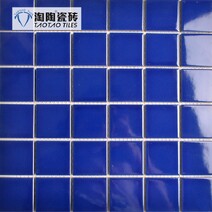News Center


Ceramic mosaic, a beautiful and elegant decorative item.
Ceramic Mosaic Guide
Ceramic mosaic is a beautiful and elegant decorative item, adorned with exquisite patterns and designs on various buildings. It can be said to be a common decorative item in traditional architecture and an important component of it. Its materials are mostly tiles, which have corrosion-resistant and durable characteristics, allowing it to be used in different environments. Therefore, in today's era, it is also widely used in the decoration of various buildings. Overall, ceramic mosaic is a refined and elegant decorative item that can enhance the aesthetic appeal of buildings, making homes look warmer and more romantic.

The installation process of ceramic mosaic mainly involves paste installation, which means placing the ceramic mosaic in the desired decorative location and then using glue to adhere it to the wall. Sometimes, special glue is also used to better secure the ceramic mosaic, preventing it from being easily lifted. In addition, the specific steps for installation include: first, cleaning the wall thoroughly to remove dirt and dust for optimal tile adhesion; second, evenly applying glue to the back of the ceramic mosaic for effective sticking; then placing the ceramic mosaic in the desired decorative location, using the tips of the thumb and fingers to press it tightly against the wall to ensure that the ceramic mosaic is not easily lifted.
If you want to install ceramic mosaic, there are some things to pay attention to. First, ensure that the size of the ceramic mosaic matches the size of the wall to avoid gaps during installation. Second, confirm that the color of the ceramic mosaic is consistent with the wall's tone to prevent clashing colors during installation. Also, check the quality of the glue to avoid loosening during installation. Overall, installing ceramic mosaic requires attention to some details; only by handling these details well can the installation be of higher quality, achieving the desired decorative effect.
Ceramic mosaic has strong plasticity and can be designed according to personal aesthetic standards, allowing adjustments to the size of various parts to make the space more refined. When choosing mosaics, it is important to understand their basic characteristics and usage range, selecting different sizes, patterns, and colors based on the indoor environment to create an excellent spatial atmosphere. Additionally, the installation of mosaics also requires attention, such as using high-quality glue to ensure the stability and moisture resistance of the mosaic, as well as correct installation methods to ensure the integrity and aesthetics of the mosaic.
Overall, ceramic mosaic is a beautiful and elegant decorative item that can enhance the aesthetic appeal of buildings, making homes look warmer and more romantic. Its installation process is relatively simple; by paying attention to some details, ceramic mosaics can be better adhered to the wall, achieving the desired decorative effect. Therefore, to decorate a house with ceramic mosaic, one only needs to master the installation steps proficiently to make the home more beautiful and elegant.
Latest Information
Olympic professional standard swimming pool tiles must be made of porcelain, not earthenware.
Advantages and disadvantages of porcelain glazed tiles
By rationally selecting glaze types (matte/glossy) and construction processes, the decorative and functional properties of porcelain tiles can be effectively balanced to achieve optimal performance in humid environments.
How to choose the right pool tiles for your pool?
Choosing the right pool tiles for your pool requires considering the following key factors.
Why do some swimming pools often injure people?
The standards of pool tiles and the differences between imported pool tiles from abroad, how to avoid pool injuries to swimmers, analysis of the causes of pool injuries to swimmers.
What is the difference between glazed tiles and mosaic pool tiles?
The differences between glazed tiles and mosaic pool tiles include appearance, physical properties, installation methods, and Price.